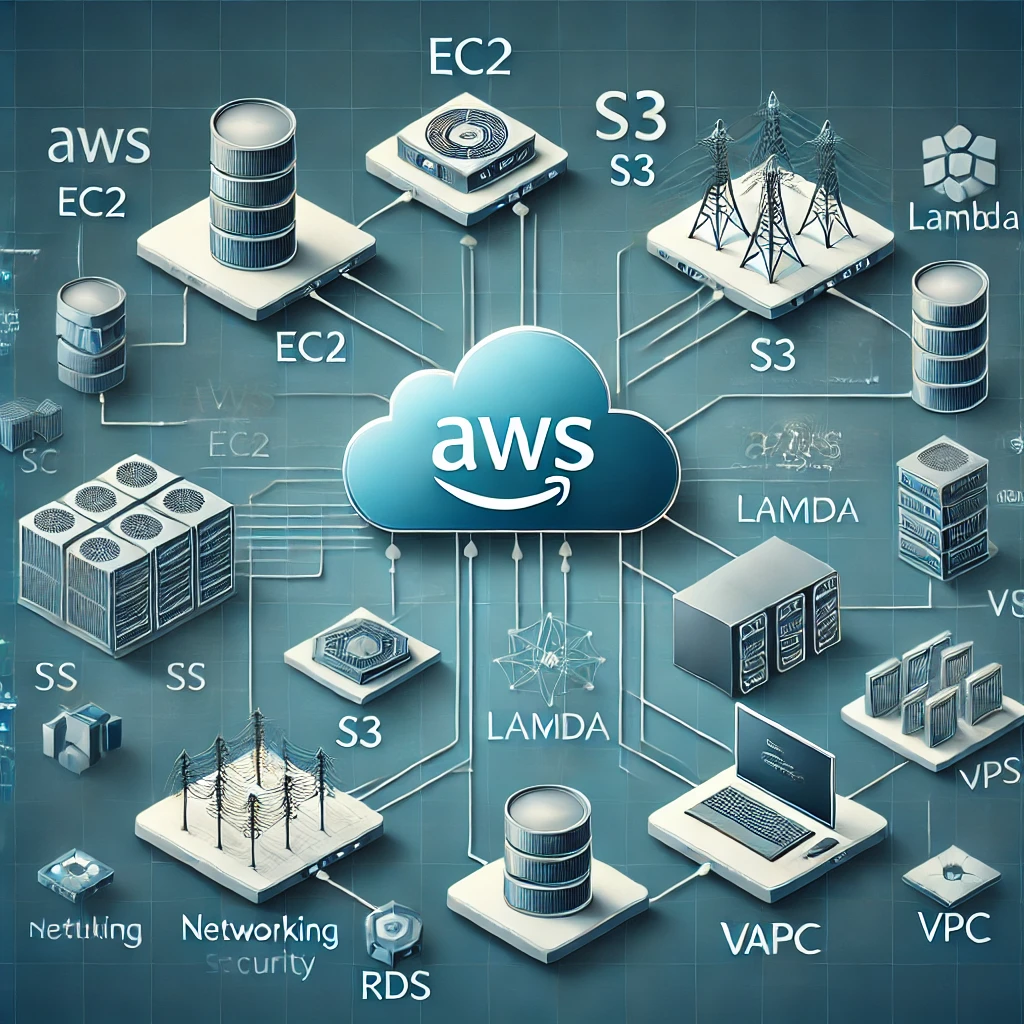AWS VPC Cheat Sheet: Key Concepts for AWS Solutions Architect Associate Exam
 Suman Thallapelly
Suman Thallapelly
Amazon Virtual Private Cloud (VPC) is the foundation of networking in AWS. It allows you to define a logically isolated virtual network within AWS. Understanding VPC is crucial for the AWS Solutions Architect Associate exam.

📌 1. VPC Basics
VPC (Virtual Private Cloud) → Your private network in AWS.
Subnets → Logical division of a VPC into public & private subnets.
Route Tables → Define how traffic is routed between subnets and external networks.
Internet Gateway (IGW) → Allows public access to the internet.
NAT Gateway / NAT Instance → Allows private subnets to access the internet without being directly exposed.
VPC Peering → Connects two VPCs privately (no transitive peering).
Transit Gateway → A central hub to connect multiple VPCs & on-prem networks.
📌 2. IP Addressing & Subnetting
CIDR (Classless Inter-Domain Routing) → Defines the IP address range for a VPC (e.g., 10.0.0.0/16).
AWS reserves 5 IPs per subnet (first 4 and last 1 IP address .0, .1, .2, .3, .255).
.0: Network address
.1: Reserved by AWS for the VPC router
.2: Reserved by AWS for mapping to Amazon-provided DNS
.3: Reserved by AWS for future use
.255: Network broadcast address.
Public Subnet → Has a route to the Internet Gateway (IGW).
Private Subnet → No direct internet access, uses NAT Gateway/Instance.
Private IP → assigned from the subnet range
Public IP → assigned from the Amazon’s pool of Public IPs
Elastic IP (EIP) → Static public IP address for NAT Gateway or EC2.
📌 3. Security & Access Control
Security Groups (SGs) → Stateful firewall controlling inbound/outbound traffic at the instance level.
Network ACLs (NACLs) → Stateless firewall controlling traffic at the subnet level.
VPC Flow Logs → Captures IP traffic logs (useful for security monitoring).
AWS PrivateLink → Securely connects VPC to AWS services without using the internet.
VPC Endpoints:
Interface Endpoint → Uses AWS PrivateLink (for services like SQS, SNS, S3, DynamoDB).
Gateway Endpoint → Route-based for S3 and DynamoDB only (free).
📌 4. High Availability & Connectivity
Multi-AZ Deployment → Distribute subnets across multiple Availability Zones (AZs) for redundancy.
VPN (Virtual Private Network) → Connects on-premises data centers to AWS securely.
Direct Connect (DX) → Dedicated private connection between on-premises and AWS (better performance than VPN).
Transit Gateway → A central hub for many-to-many VPC & on-prem connections.
📌 5. Best Practices & Exam Tips
✅ Always place databases in private subnets to avoid direct internet exposure.
✅ Use NAT Gateway instead of NAT Instance (fully managed, highly available).
✅ Security Groups are stateful, while NACLs are stateless.
✅ VPC Peering does not support transitive routing (use Transit Gateway instead).
✅ S3 Gateway Endpoints are free, while Interface Endpoints incur charges.
✅ Flow Logs help with network monitoring & troubleshooting.
✅ Direct Connect is better than VPN for low latency & high bandwidth needs.
✅ Use PrivateLink to connect securely to AWS services inside VPC.
🚀 Final Thoughts
Understanding AWS VPC is critical for designing secure, scalable, and high-performance architectures. Mastering subnets, security, and connectivity options will help you ace the AWS Solutions Architect Associate exam and build real-world AWS solutions.
Subscribe to my newsletter
Read articles from Suman Thallapelly directly inside your inbox. Subscribe to the newsletter, and don't miss out.
Written by

Suman Thallapelly
Suman Thallapelly
Hey there! I’m a seasoned Solution Architect with a strong track record of designing and implementing enterprise-grade solutions. I’m passionate about leveraging technology to solve complex business challenges, guiding organizations through digital transformations, and optimizing cloud and enterprise architectures. My journey has been driven by a deep curiosity for emerging technologies and a commitment to continuous learning. On this space, I share insights on cloud computing, enterprise technologies, and modern software architecture. Whether it's deep dives into cloud-native solutions, best practices for scalable systems, or lessons from real-world implementations, my goal is to make complex topics approachable and actionable. I believe in fostering a culture of knowledge-sharing and collaboration to help professionals navigate the evolving tech landscape. Beyond work, I love exploring new frameworks, experimenting with side projects, and engaging with the tech community. Writing is my way of giving back—breaking down intricate concepts, sharing practical solutions, and sparking meaningful discussions. Let’s connect, exchange ideas, and keep pushing the boundaries of innovation together!